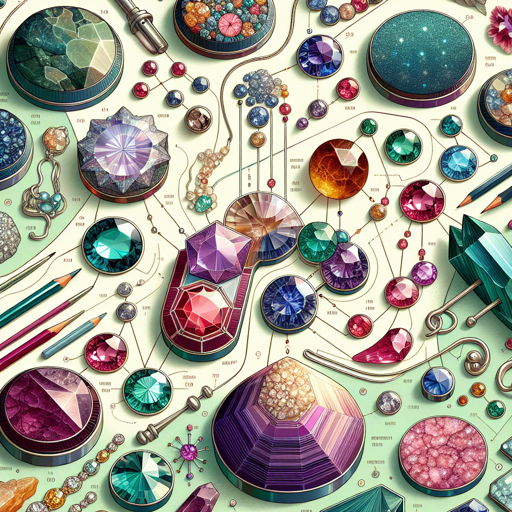Geology's Profound Impact on Jewelry Design
Discover how geology inspires and shapes modern jewelry design, creating stunning pieces that captivate and intrigue.

Introduction
An unexpected but fascinating intersection exists between the worlds of geology and jewelry design. This beautiful synergy is born from the earth’s depths where minerals and gemstones form, intriguing us with their varied textures, colors, and compositions. These natural wonders not only capture our hearts as stunning jewelry pieces but also serve as a constant reminder of our planet’s captivating geological phenomena.
Geology’s Influence in Jewelry Design
Geology has a profound influence on jewelry design. Jewelry designers often seek inspiration from the natural world, and minerals and gemstones, with their myriad forms and colors, offer an inexhaustible source of inspiration.
Some designers create pieces that mimic geological formations, incorporating raw, uncut gemstones or minerals in their natural form. Others draw inspiration from the colors and patterns found in different types of rocks and minerals. The result is a diverse range of jewelry that echoes the beauty and complexity of the earth’s geology.
“The earth’s geology is a magnificent canvas from which jewelry designers draw inspiration, transforming raw minerals and gemstones into wearable pieces of art.” - Anonymous
A Glimpse into Geological Elements in Jewelry
Here’s a brief look at some popular geological elements used in jewelry design and their unique properties:
| Geological Element | Properties | Symbolic Meaning |
|---|---|---|
| Diamond | Hardest known mineral, exceptional brilliance | Love, Purity, Eternity |
| Ruby | Durable, vibrant red color | Passion, Protection, Prosperity |
| Emerald | Rich green color, often included | Fertility, Rebirth, Love |
| Sapphire | Comes in various colors, excellent hardness | Wisdom, Royalty, Divine Favor |
| Amethyst | Ranges from light to dark purple | Calmness, Balance, Peace |
This table showcases just a few examples of the many geological elements used in jewelry design. Each one has its unique properties and symbolic meanings, adding not only physical beauty but also emotional depth to the jewelry pieces.
Geology Education through Jewelry
Jewelry design can also serve as an educational tool, introducing people to the fascinating world of geology. Wearing a piece of jewelry made from a certain gemstone or mineral can spark curiosity about its origins, leading to a deeper understanding and appreciation of earth sciences.
For instance, a necklace featuring an amethyst pendant can initiate a conversation about how this beautiful purple gemstone forms within geodes through a process of volcanic activity. Similarly, a diamond engagement ring may lead to discussions about how diamonds form under intense heat and pressure deep within the earth’s mantle.
The Geological Society offers more information about the geological origins of popular gemstones and minerals.
Conclusion
The influence of geology on jewelry design is profound and far-reaching. It not only shapes the aesthetic of the pieces but also connects us to the earth’s fascinating geological processes. Whether it’s the vibrant colors of a ruby, the brilliant sparkle of a diamond, or the soothing purple hue of an amethyst, each piece of jewelry tells a geological story. And through these stories, we can foster a deeper appreciation and understanding of the incredible world beneath our feet.